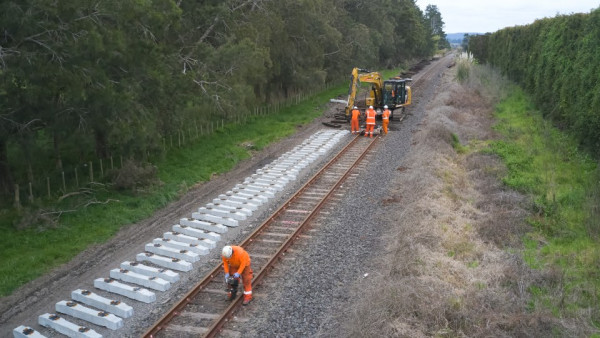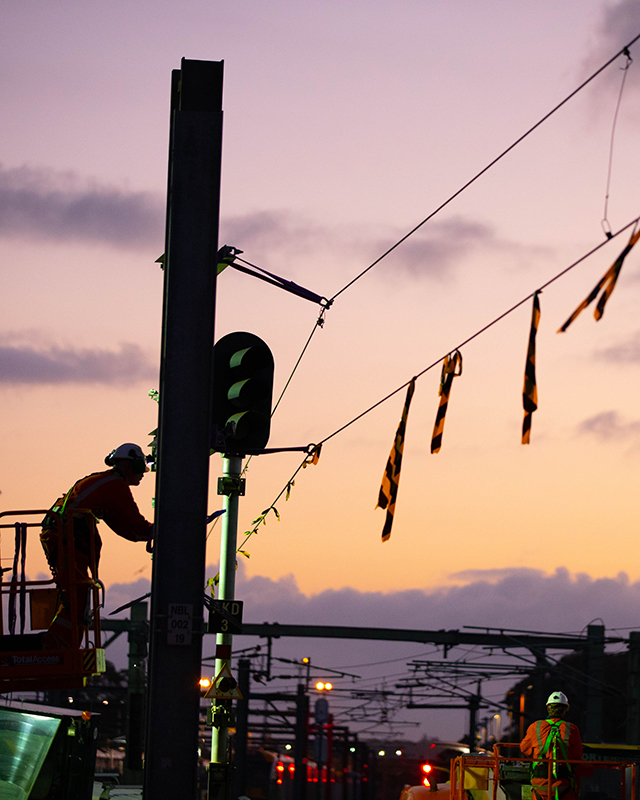Accessing our Network
KiwiRail Corridor
The rail corridor – the land that the rail tracks run along – is out of bounds to the public to ensure your safety. Trains run on our network 24 hours a day, seven days a week. They are heavy, fast, and take a long time to stop.
If you need to access the rail corridor or carry out certain activities immediately next to it, you must apply to KiwiRail for permission.
This permission may include a Permit to Enter. Please note that notice periods for a Permit to Enter vary depending on the works being undertaken.
Corridor Access / Permit to Enter Team
The Corridor Access team at KiwiRail is dedicated to ensuring the safety and coordination of all activities within or near the rail corridor. Our primary responsibility is managing the Permit to Enter process, which is essential for maintaining the integrity and security of our rail network.
Whether you’re a contractor, utility provider, or involved in any activity near the rail corridor, our team is here to guide you through the Permit to Enter process, ensuring your work is carried out safely and efficiently.
For more information on how to contact the team, please Contact Us.
For Information on applying for a Permit, click here: KiwiRail Permit to Enter
Situations Requiring a Permit to Enter
A KiwiRail Permit to Enter is essential for ensuring safety and coordination within or near operational rail areas. Here are some examples of where such a permit is required:
Working within 5 metres of any Mainline Track: Any work or personnel within this proximity to the rail requires a permit to ensure safety and compliance.
Traffic Management Plans (TMPs): If the work involves traffic management, working adjacent to and within 10 metres of the track or 5 metres of a level crossing, a Permit to Enter enquiry is necessary to review and approve the TMP.
Electrical Overhead Wires: If the work area includes electrical overhead wires, an additional Electrical Safety Permit or Permit to Work Near Railway Power Lines is required.
KiwiRail Facilities: Any work proposed within five metres of live rail in a KiwiRail facility, including mechanical facilities, requires a permit.
Wider KiwiRail Land: Activities within the broader KiwiRail land may also necessitate a Permit to Enter to ensure safety, coordination, and compliance with regulatory standards.
For information on how to apply for a Permit to Enter, click here.
Installing a Utility
If you are installing or maintaining utilities such as cables, pipes, power lines, or drains, KiwiRail has strict guidelines. These activities are governed by the National Code of Practice for Utility Operators’ Access to Transport Corridors.
For more information on what is required and how to apply, NZUAG - National Code of Practice (click here)
Mainline vs. Non-Interlocked Areas
Mainline Areas:
These are the primary tracks used for long-distance and high-speed train operations. Any work within 5 metres of a mainline track requires a Permit to Enter to ensure safety and compliance.
Non-Interlocked Areas:
These are areas where train movements are not controlled by interlocking signals.
In non-interlocked areas, an Authority to Access - Non-Interlocked is required for activities around train arrival and departure roads linking the mainline to the yard.
These permissions are issued internally within the non-interlocked terminal to ensure all work is conducted safely and in coordination with rail operations.
Historically, this was known as a Yard Permit.
For any incidents or activities in non-interlocked areas, the regional teams (Above Rail) are responsible for:
Issuing Authority to Access: Ensuring all necessary safety measures are in place.
Coordinating with other teams: To maintain safety and operational efficiency.
Managing incidents: Responding to and resolving any safety or operational issues that arise.
For more details or to contact teams in non interlocked areas, please use the KiwiRail Contact Us team to engage with these teams in the interim.
Contact us
If you have questions or can’t find what you’re looking for, please email: contactus@kiwirail.co.nz

Rail Protection Requirements
A Rail Protection Officer (RPO) may need to be present during your access. For safety reasons, all rail protection is coordinated by the KiwiRail National Protection Team.
Please contact us if you require clarity on your access requirements. We are happy to offer assistance
Corridor Access & Protection

Corridor Beautification
- If you would like to enhance the rail corridor including by planting vegetation and removing graffiti, a beautification lease may be required. (Click Below)
For information on how to apply - Click Here: Beautification
Moving Over-dimension Loads
- If you are moving over-dimensional loads across the rail corridor (House Moving etc.) (Click Below)
For information on how to apply - Click Here: Over-sized loads
Cycleways
- Creating cycle or walkways near the rail corridor (Click Below)
For information on how to apply - Click Here: Shared Pathways
Filming
- Filming or photography near or on the rail corridor (Click Below)
For information on how to apply - Click Here: Filming and photography
Livestock
For information on how to apply - Click Here: Move Livestock
For more information on how to apply for a permit, click here.
